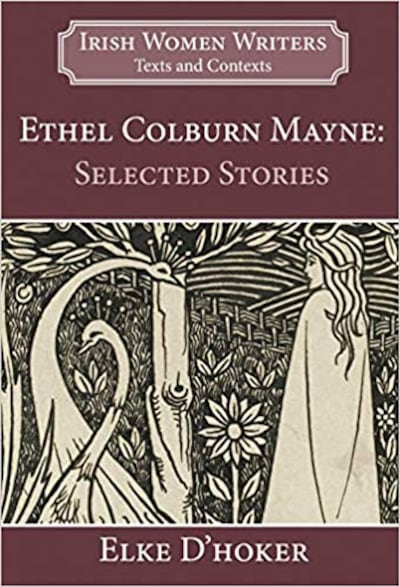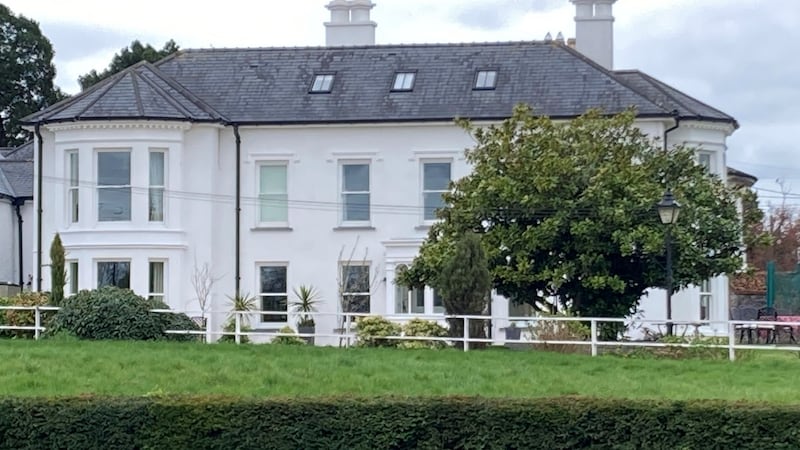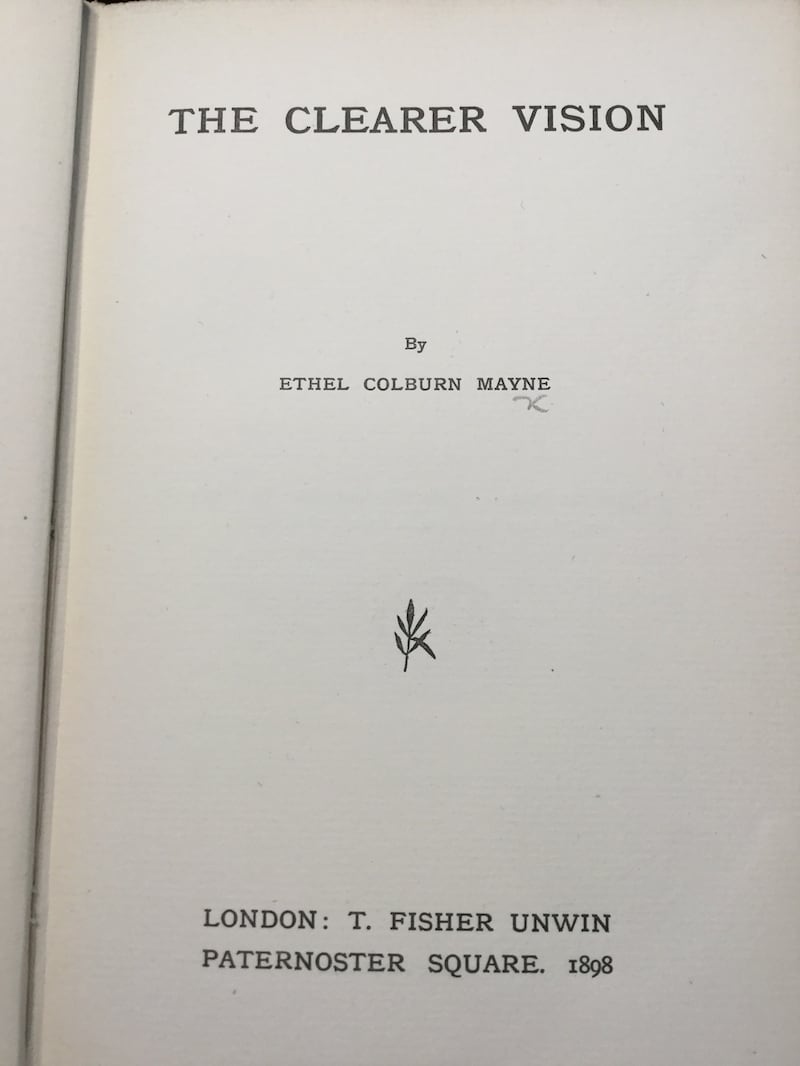Eighty years ago, on April 30th, 1941, the Anglo-Irish writer Ethel Colburn Mayne died in Torquay following injuries sustained during the London Blitz.
Born in Ireland in 1865, Mayne had lived in London for the past 36 years, where she had made a name for herself as a novelist, short story writer, biographer and translator. She was known in particular for her biographies of Lord and Lady Byron and for her short stories, which reviewers put on a par with those of Henry James and Katherine Mansfield.
In English literary histories, she is now remembered – if she is remembered at all – as a contributor to the Decadent magazine The Yellow Book, while in Ireland her work has been all but forgotten. Yet Mayne’s fiction absolutely deserves to be rediscovered, both for its unique depiction of the social dynamics of late-19th-century Irish garrison towns and for its sustained exploration of the debilitating effects of gendered conventions and national stereotypes.

Mayne herself never forgot Ireland. She always identified herself as Irish and a significant part of her fiction is set in the country of her birth. In a letter from 1924, she defends the Irish credentials of her family as follows:
“the Irish blend of the Maynes went to Ireland under Elizabeth, so I think we may, very deferentially, call ourselves Irish! My mother was Irish – her name was Sweetman, and that name has been much concerned in what used to be called the “rebel” doings in Ireland […]My father was first in the Royal Irish Constabulary, and afterwards a resident Magistrate – and so it was in the “British Garrison” circles that our social life in Ireland was spent. I, as soon as I came to years of discretion, was always on the Nationalist side. My sister, too – and she has married into a family more truly Irish than the Maynes; her husband […]is a Cotter, but both my brothers are “Unionists” – that obsolete sect!” (National Library of Scotland, Macgillivray Papers, Acc. 3501)
After a childhood in Johnstown and Kinsale, Mayne moved to the city of Cork, where her father was appointed resident magistrate. From the family home, Rockmahon, on Blackrock’s Castle Road, Mayne sent her first stories to London magazines in the early 1890s.

In 1895 Henry Harland, editor of The Yellow Book, accepted one of her stories for publication and subsequently invited her to London to take up the post of sub-editor. Though that experience would be short-lived, it gave Mayne sufficient confidence to embark on a writing career. Her first short story collection, The Clearer Vision (1898), and her first novel, Jessie Vandeleur (1902), met with positive reviews, but Mayne found it difficult to gain access to London’s literary circles from her home in Cork.
So, in 1905 she moved to London where her career soon prospered: she published three further novels and another collection of short stories to critical acclaim and was contracted to write several biographies and critical studies.
After the first World War, Mayne’s literary work became concentrated on the genre of the short story, a form that perfectly suited her impressionistic style and ironic sensibility. She contributed stories to modernist anthologies and periodicals, such as The Golden Hind and The Transatlantic Review, and became friends with fellow writers like Mary Butts, Ford Madox Ford and Christopher Isherwood. Through her friendship with British psychoanalyst Joan Riviere, she was also involved in the Hogarth Press’s translation of the writings of Sigmund Freud.
In the late 1920s, Mayne’s fiction output waned, due to the strain of having to care for her elderly father and invalid sister. Yet, spurred on by financial worries, she continued to work as a biographer and translator. After her bestselling two-volume work on Byron, she published a widely commended biography of Lady Byron, making use of previously unpublished diaries and letters. Leonard Woolf praised it in The Nation as “one of the most fascinating and important biographies which have appeared for a long time”, and Rebecca West hailed it in The Bookman as the “most popular book of the London season”.
Mayne’s final publication was A Regency Chapter (1939), a biography of Lady Bessborough, the mother of the Anglo-Irish author Caroline Lamb. After their London home was bombed in September 1940, Mayne and her sister moved to Devon to be closer to their brothers, but they died within weeks of one another the following spring.
In the absence of major critics or writers championing her work, Mayne quickly fell between the cracks of literary history. Unlike her good friend Violet Hunt, whose 10-year affair with Ford Madox Ford had garnered a good deal of publicity, Mayne never caused enough of a stir to become famous and her fictional focus on the inner lives of women was swiftly passed over by the male literary establishment at the time.

Her preference for the “minor” form of the short story aggravated her neglect, as did the diversity of the oeuvre she left behind. Nor has Mayne’s work been recovered in more recent years as part of the Irish tradition of women’s writing. As an Anglo-Irish Protestant writer living in London, she sits less easily with nationalist conceptions of the Irish canon, nor does the subtle quality of her writing readily lend itself to feminist recovery.
Finally, as Mayne’s fiction spans from the 1890s to the early 1930s, it bears traces of two distinct literary traditions – late-Victorian aestheticism and early-20th century modernism – but doesn’t fully belong to either. Like her hyphenated national identity, Mayne’s inconvenient straddling of these literary traditions has further added to her marginalisation.
At the same time, the versatility of her subjects also offers us a chance today to connect her work to that of many other Irish authors, turn-of-the-century New Woman writers and modernists alike. Like the short fiction of George Egerton, Mayne’s early stories aim to challenge the view of femininity put forward by male writers.
In Lucille and The End of It, for example, she deflates a pompous male narrator and satirises his deluded views on women by using his own language to expose his fatuousness. Jessie Vandeleur’s portrait of a woman writer in the decadent circles of 1890s London speaks to the related New Woman concern with the female artist that can also be found in Sarah Grand’s The Beth Book (1897) and Katherine Cecil Thurston’s Max (1910). Thurston in fact lived up the road from Mayne in Blackrock during the 1890s, but with their different political and religious backgrounds they probably moved in different circles.
Hence, although Mayne’s critique of the circumscribed lives of Irish girls and women in novels such as Gold Lace (1913) and One of Our Grandmothers (1916) dovetails to some extent with Thurston’s portrayal of a small Irish country town in The Fly on the Wheel (1908), Mayne’s astute dissection of the warped social and gender relations in Irish garrison towns adds a unique perspective to these feminist concerns.
Mayne’s later short fiction continues this focus on women’s inner lives but brings to it the more modern class-sensibility, psychological insight and condensed clarity that also mark the modernist stories of Norah Hoult and Elizabeth Bowen.
While mother-daughter relations had always been central to her work, in stories like The Peacocks and The Letter on the Floor Mayne perceptively evokes the frustrated feelings on both sides of the relationship. In her emphasis on the performative dimension of gender norms, further, Mayne anticipates Bowen’s theatrical staging of identity in many of her novels and short stories.
In fact, Mayne seems to have known both Bowen and Hoult in London. Hoult created a fictionalised portrait of Mayne in her novel There Were No Windows (1944), which depicts Violet Hunt’s slow decline into dementia. Bowen, who also hailed from Co Cork, included a story by Mayne in her 1936 anthology The Faber Book of Modern Short Stories, while regretting that Mayne “never quite [received] the prominence she deserved”.
Now, however, it is to be hoped that Mayne’s work will begin to find new readers, as her fascinating portraits of the upheavals in the lives of women around the turn of the twentieth century, both in Ireland and in England, are certainly well worth reading today.
Elke D’hoker is professor of Irish literature at the University of Leuven. The collection, Ethel Colburn Mayne: Selected Stories (Brighton: Edward Everett Root) is out now












